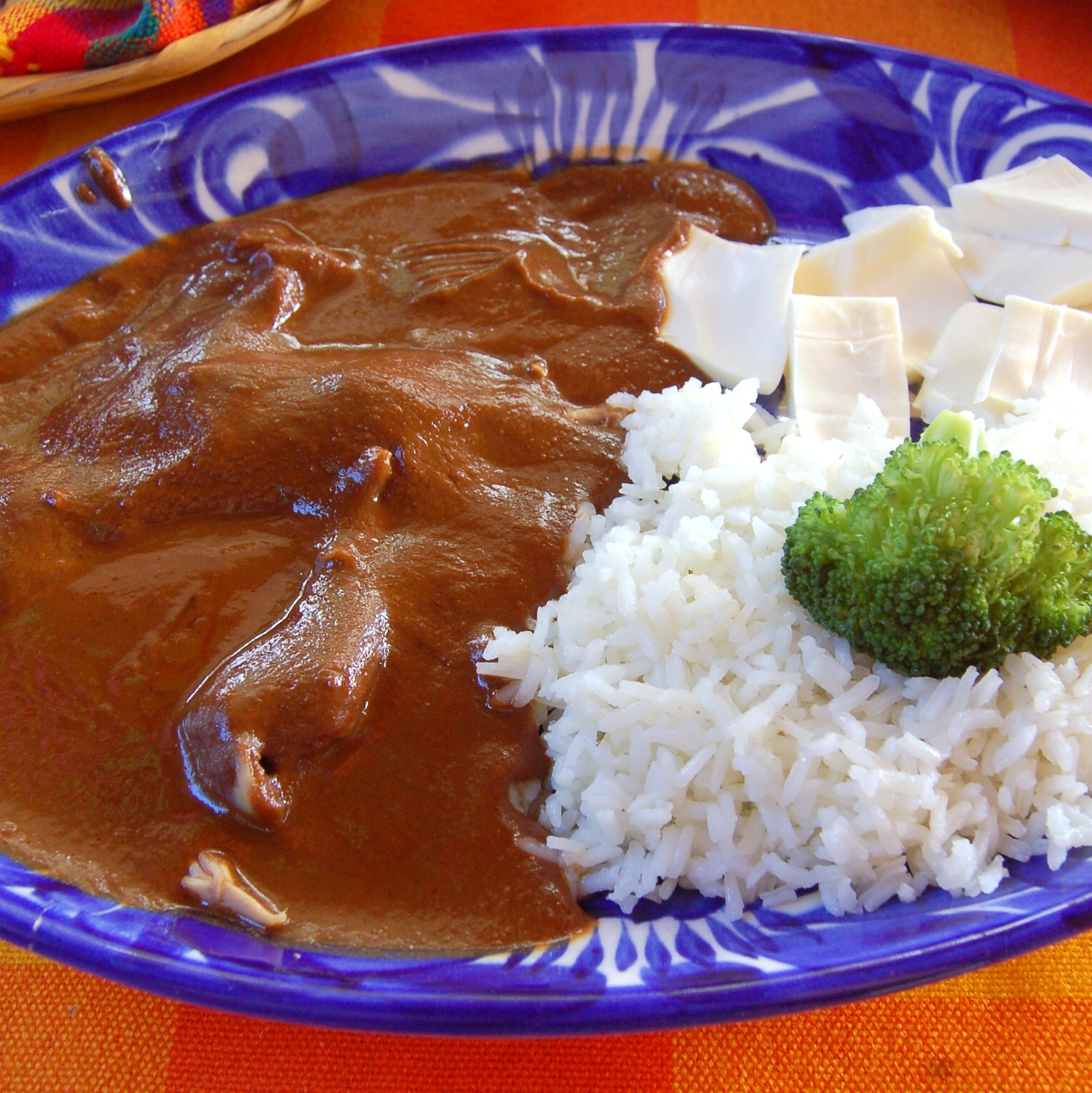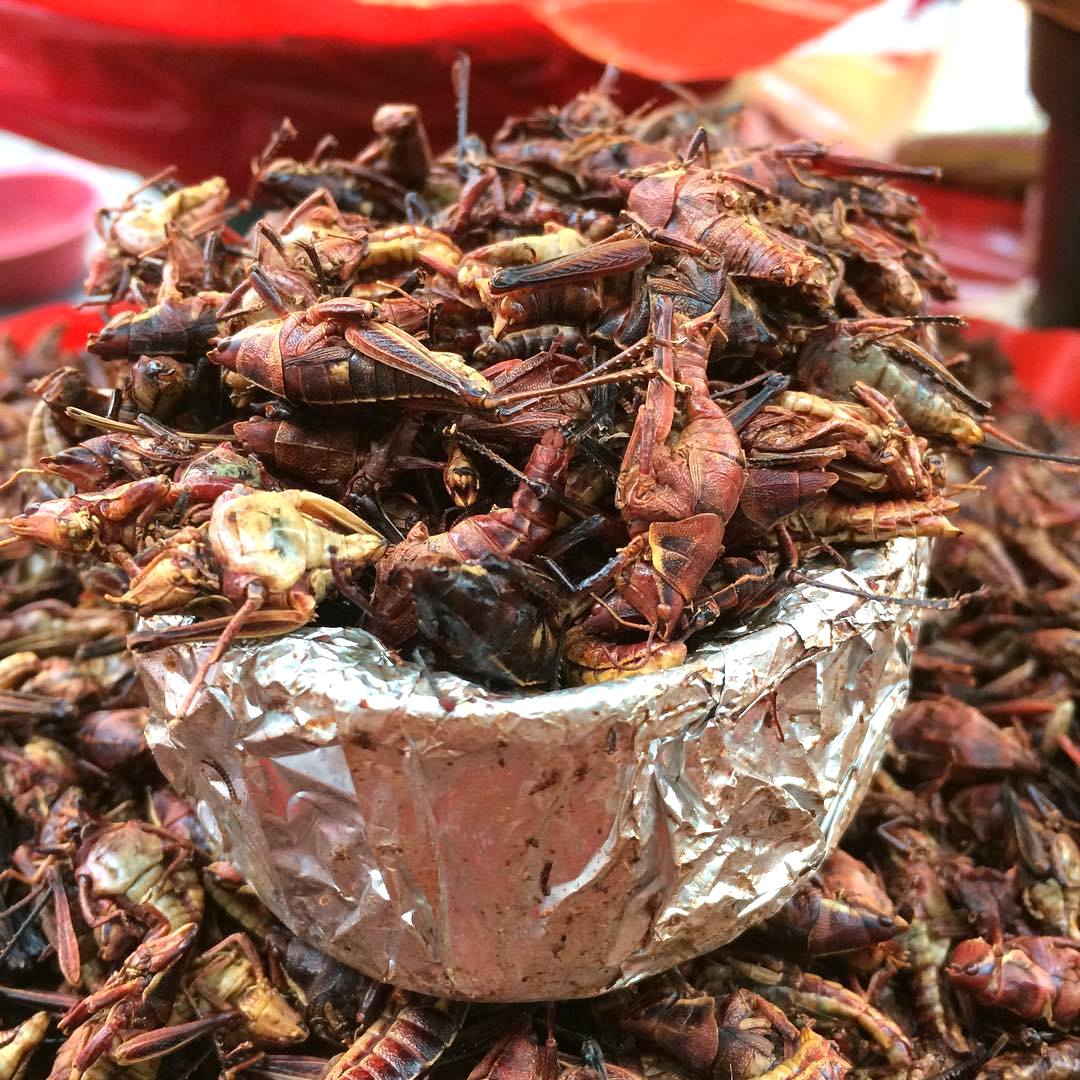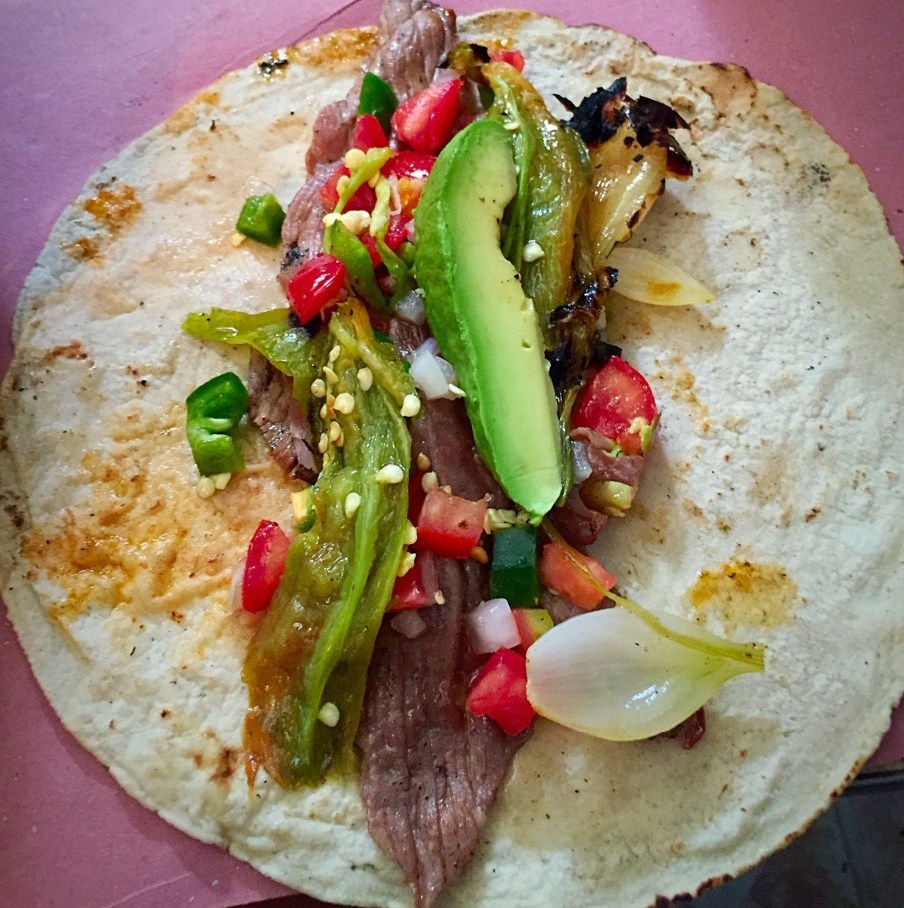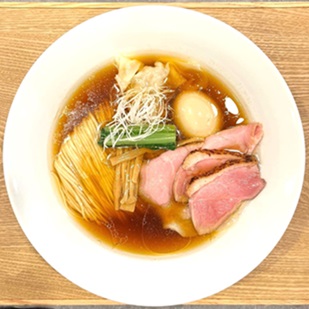7 Essential Eats in Oaxaca
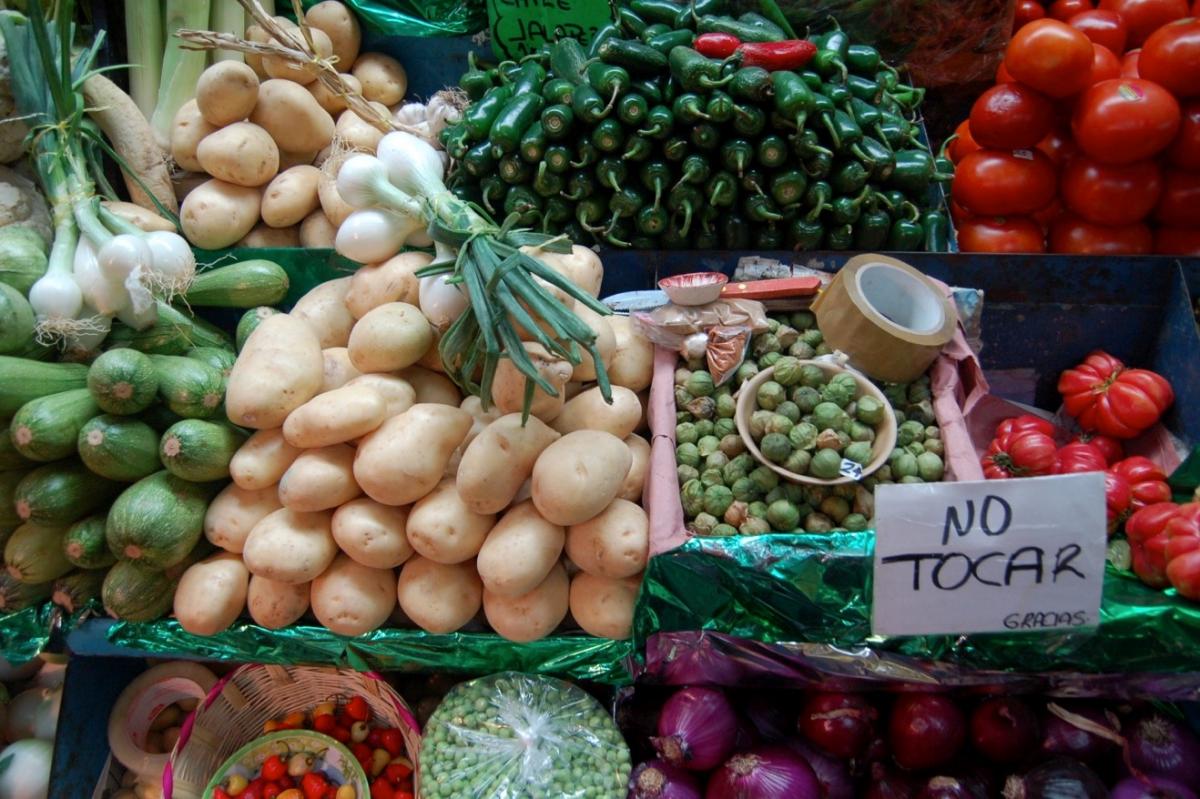
The Valley of Oaxaca offers a colorful cornucopia of produce. / W. Scott Koenig, www.AGringoInMexico.com
Oaxacan Cuisine: A Bounty of Culture and Taste
More than 10,000 years ago, small tribes that had hunted and searched for food during the Ice Age settled into the Valley of Oaxaca and a life of farming the grains, vegetables and plants they had previously foraged. Over time, cooking and local food sourcing traditions from the indigenous Zapotec to the Mixtec blended with those of the invading Spaniards in the 16th century.
Today, Oaxaca is internationally renowned as one of the food capitals of Mexico (along with Michoacán, Puebla and Baja California), its cuisine named an “intangible” UNESCO asset in 2013. From the street, to the market, to the high-end hacienda, Oaxaca’s colorful and varied gastronomic offerings range from street pozole to modern takes on traditional Oaxacan cuisine at foodie restaurants such as La Catedral, Casa Oaxaca and Los Danzantes.
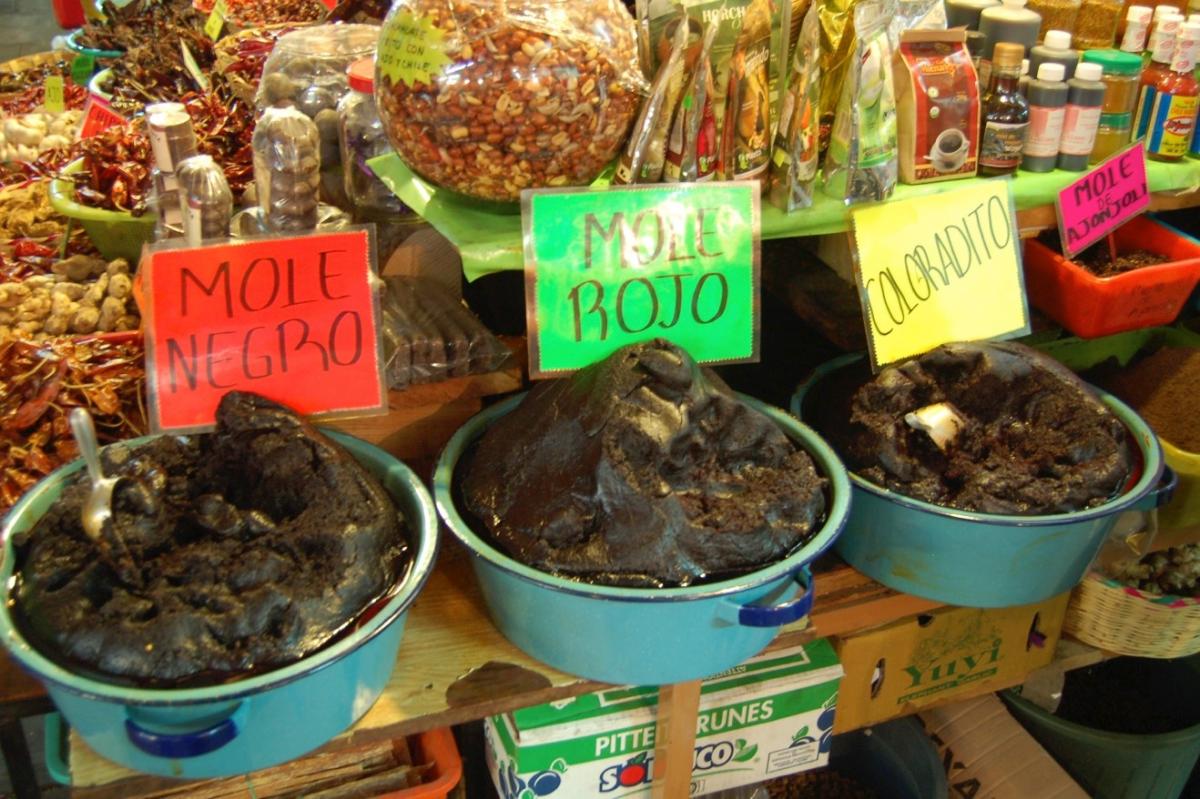
Oaxaca is known as the land of seven moles. / W. Scott Koenig, www.AGringoInMexico.com
Oaxacan Food Staples
Using ingredients such as corn, quesillo (Oaxacan string cheese), black beans, chiles, chocolate, grains, locally-sourced meats and a smattering of vegetables to make tamales, tlayudas, tacos, empanadas, moles and more, Oaxaca offers a variety of tastes that surprise the senses. Small artisanal and large corporate “palenques” (Mezcal refineries) operate just east of the city. The food and drink, much like Oaxaca itself, is absorbed into your being and you become the place from the inside out. Such is the essence of good travel … and good eating!
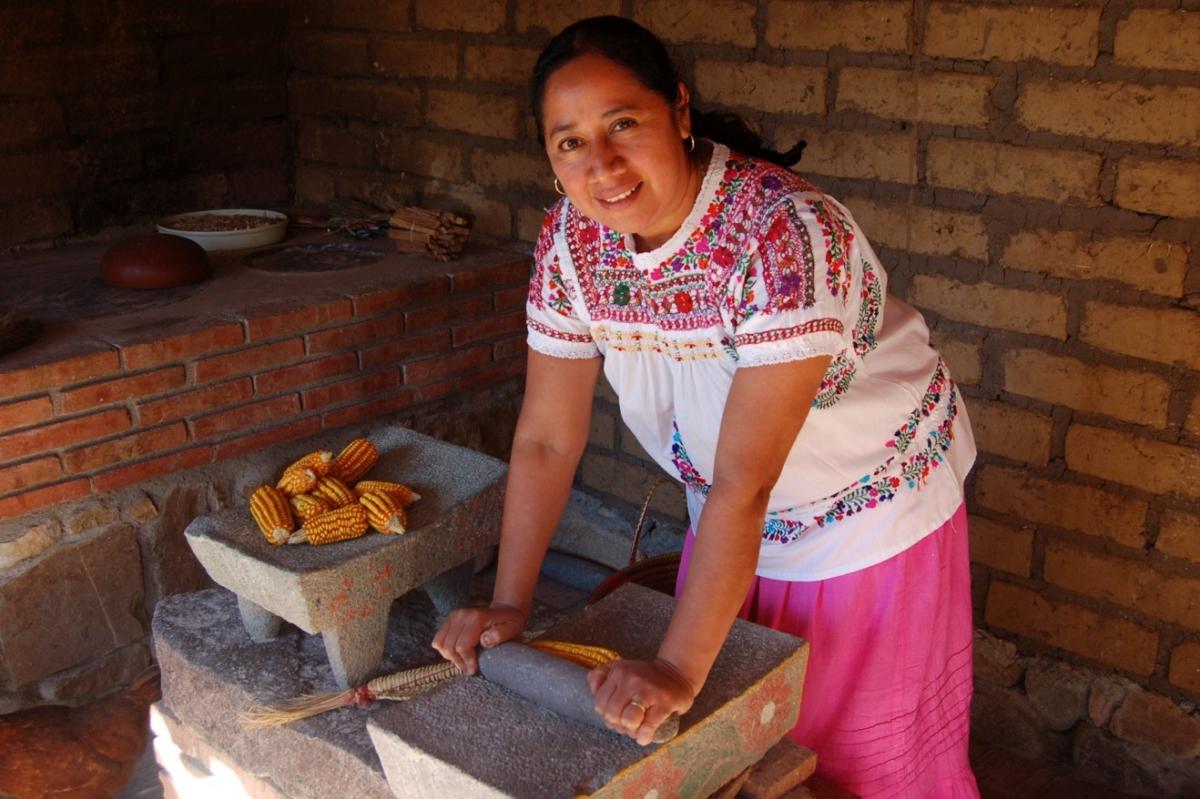
Carina Santiago cooks traditional staples at Tierra Antiqua. / W. Scott Koenig, www.AGringoInMexico.com
Traditional Oaxacan Cuisine
Carina Santiago strives to keep Zapotec cooking traditions alive in her village of Teotitlan del Valle, just 30 minutes outside of Oaxaca de Juarez. Known for its colorful Zapotec rug weavers, Teotitlan is home to her and her husband’s restaurant, Tierra Antigua. Carina maintains a traditional Zapotec kitchen as well as a “modern kitchen” and serves traditional moles and other delicious staples. Her two daughters are learning Carina’s preparation and cooking techniques, and her son weaves rugs — a talent passed down from his father.
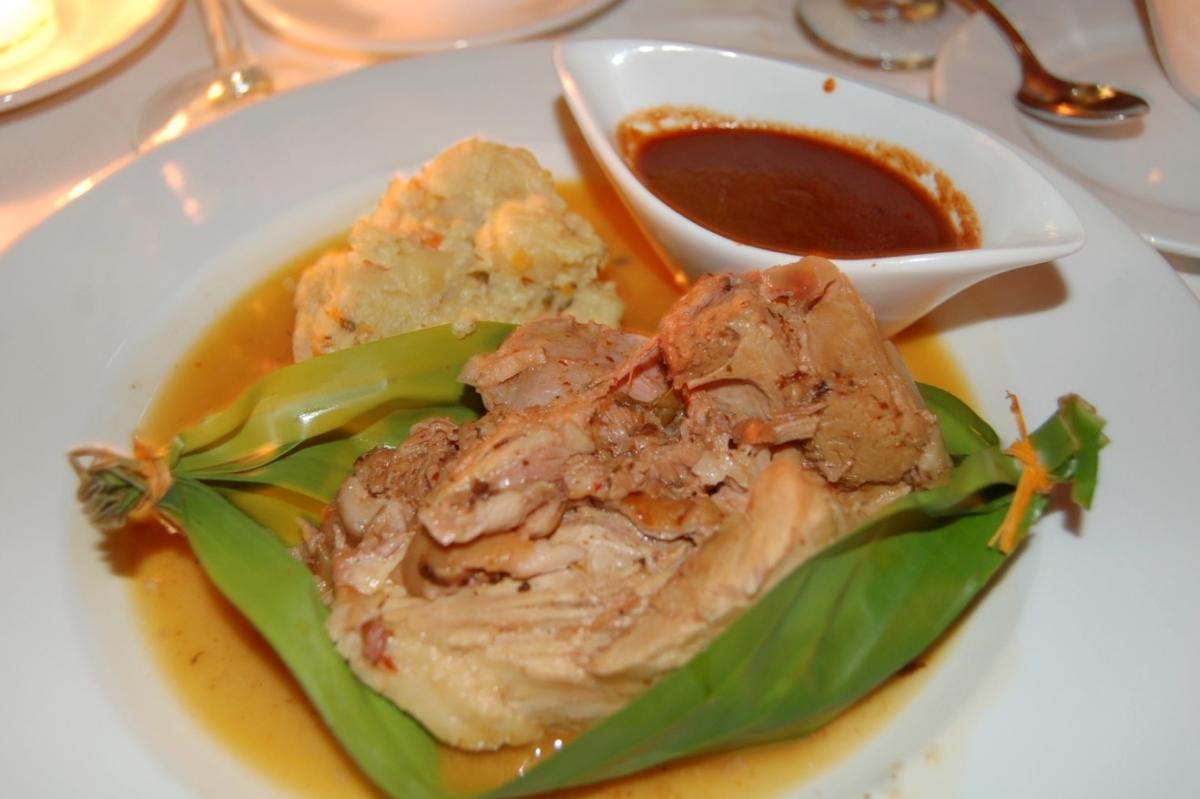
Lechón al Horno estilo Tehuantepec at La Catedral. / W. Scott Koenig, www.AGringoInMexico.com
Modern Takes on Oaxacan Cuisine
During our stay, we treated ourselves to a “splurge night” (or maybe two), enjoying a candlelit retreat, good Baja California wines and impeccable service after a busy day exploring the city’s cathedrals, museums and galleries. Our favorite destination was La Catedral. Providing a take on the traditional, the Lechón al Horno estilo Tehuantepec (Suckling Pig in Tehuantepec style) with Mole Coloradito and mashed potatoes is modern Oaxacan comfort food at its best.
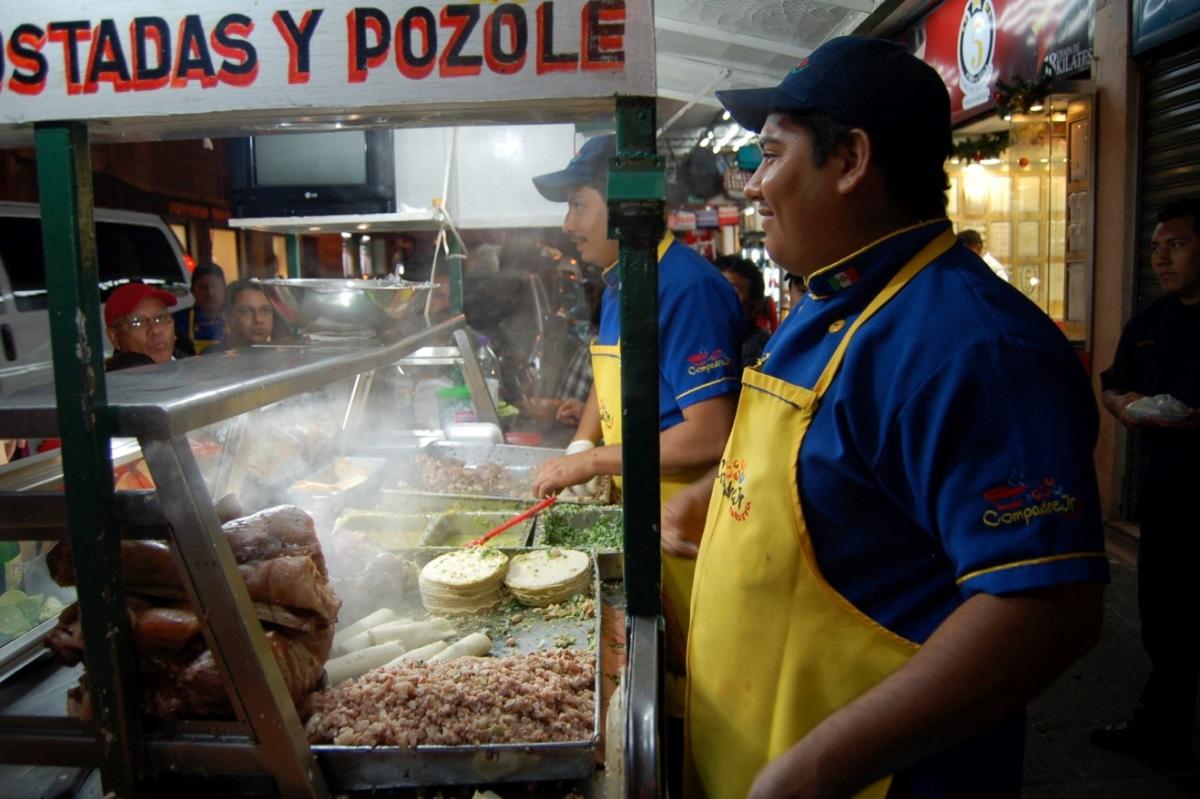
Vendors at Mercado Benito Juarez want customers to leave happy. / W. Scott Koenig, www.AGringoInMexico.com
Taking It to the Street
Street food in Oaxaca is varied, delicious and very affordable, filling the air with smoky tantalization. Every night, vendors roll up in front of Mercado Benito Juarez near the zocalo and serve pozole, tostadas, tacos, tasajo (salted beef skirt steak), cecina (pork), tortas and more. Don’t be gun-shy … I’ve never had a bad experience eating street food in Mexico. These folks want their customers to leave happy and return hungry for more!
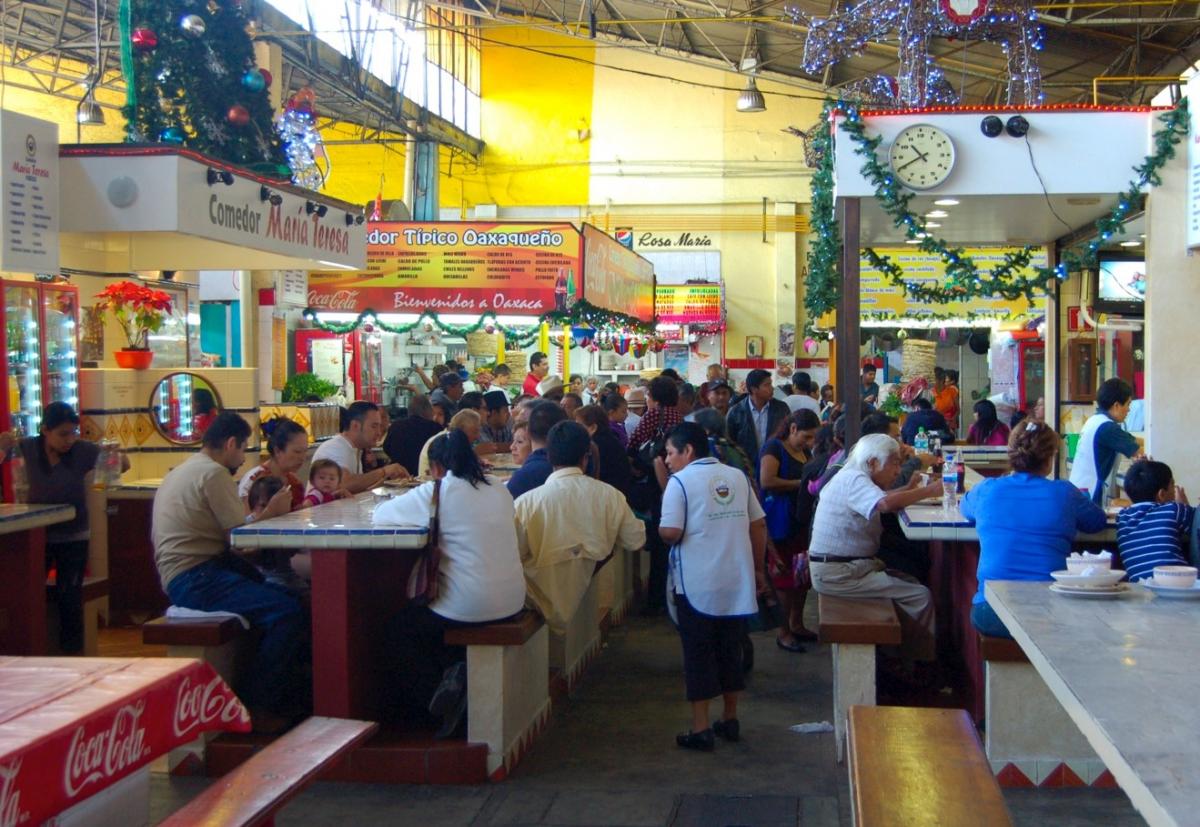
Be sure to visit one of the food stalls at Mercado 20 de Noviembre. / W. Scott Koenig, www.AGringoInMexico.com
Mercado 20 de Noviembre Food Stalls
No trip to Oaxaca city is complete without a visit for a bite at one of the food stalls in the bustling Mercado 20 de Noviembre. As you dodge hungry customers, vendors, tourists and the occasional chicken, your nose will lead you to a number of sit-down “fondas” (small food stalls) where you can choose from empanadas, tlayudas, moles, hot chocolates, flavored aguas and other local favorites. Most fondas share a similar menu, so just take your pick!
1. Carne Asada - Mercado 20 de Noviembre
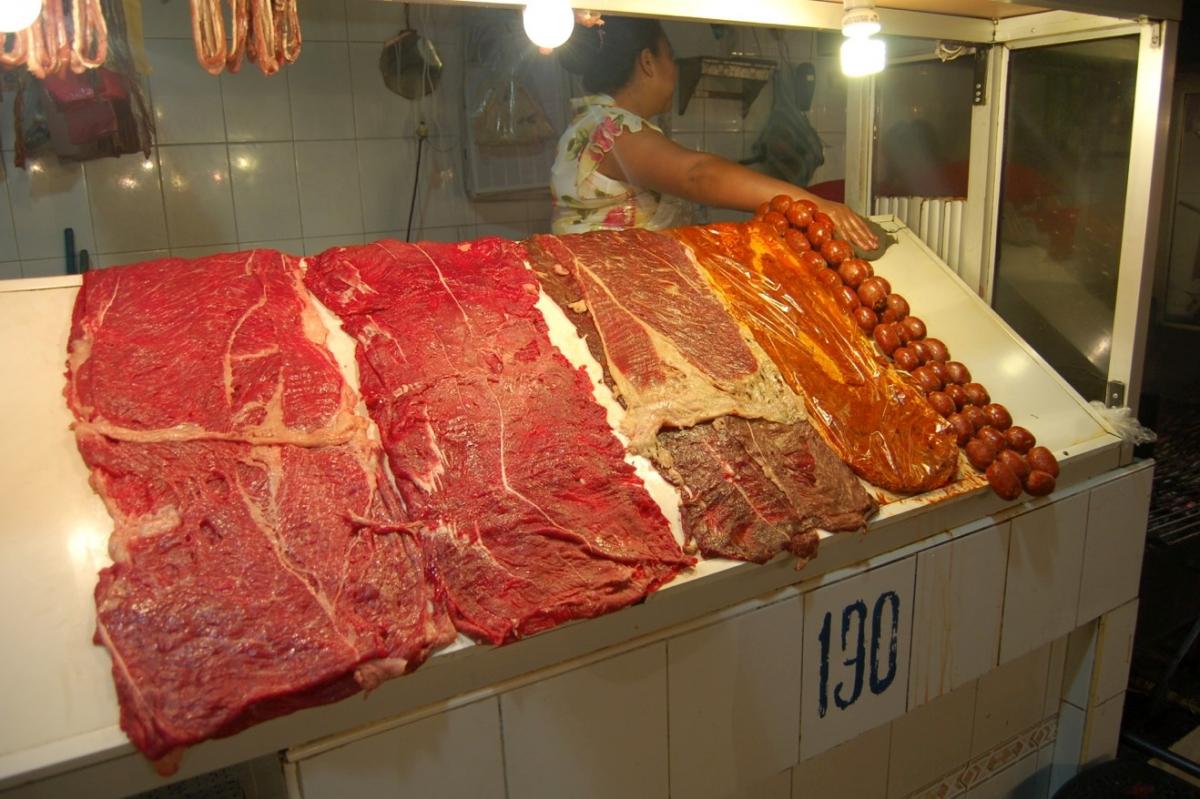
“Carne Asada” at Mercado 20 de Noviembre. / W. Scott Koenig, www.AGringoInMexico.com
Near the food stalls of Mercado 20 de Noviembre, enter the smoky domain of the area known simply as “Carne Asada.” You’re given a wicker basket that you take to one of the numerous carne asada vendors (shown), who keep a selection of cured tasajo and Oaxacan chorizo on display for you to choose from. Your meat is grilled to perfection and brought to your table with tortillas, grilled onions, peppers, radishes, chiles and guacamole.
2. Chapulines (Grasshoppers)
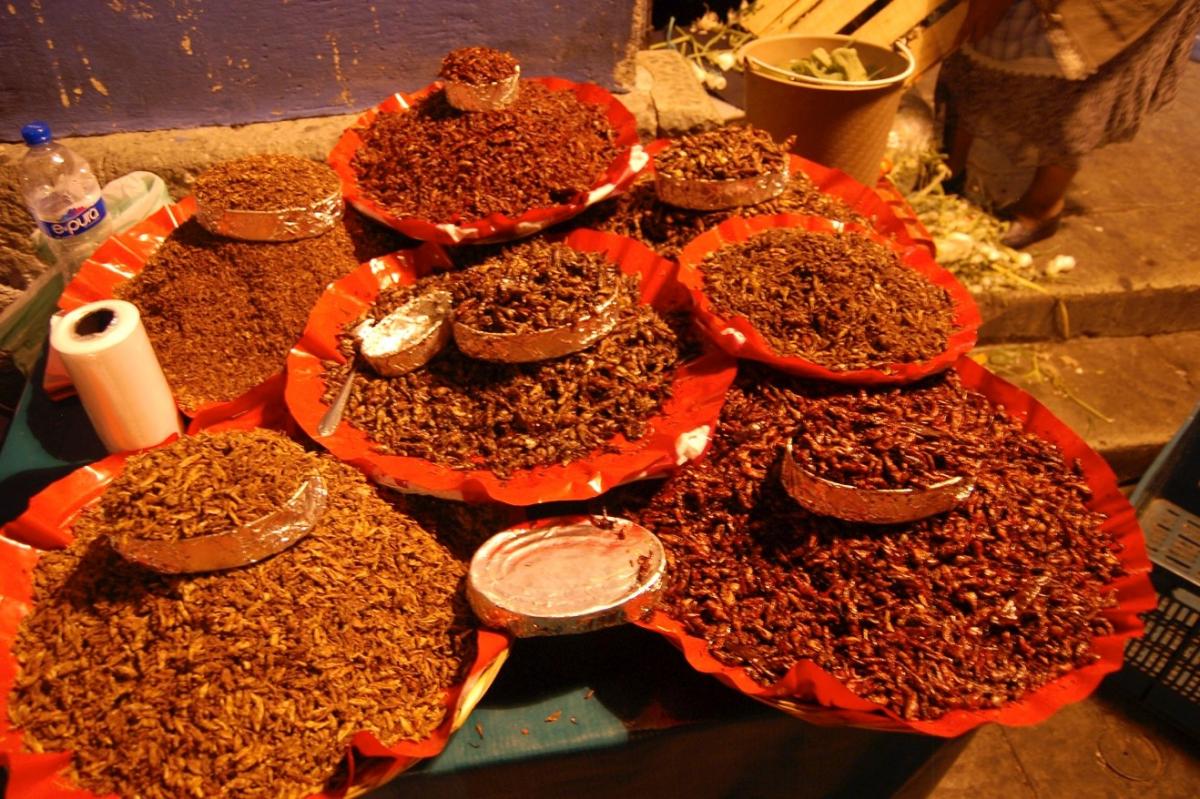
Fried grasshoppers are a popular snack in Oaxaca, even topping pizza. / W. Scott Koenig, www.AGringoInMexico.com
Let’s get this out of the way… grasshoppers ARE eaten as part of the regular diet in Oaxaca. I bought a bag of them from a gentle, elderly Indian woman on the street at Oaxaca’s zocalo. Baked on a comal, chapulines taste of salt, lime, a touch of chile and a bit of grass, the animal’s preferred diet. They are sold on the street, at markets, and prepared fried in olive oil with peppers and garlic in restaurants. You can even order chapulines as a pizza topping at Pizza Nostrano near Santa Domingo Cathedral.
3. Holy Moles!
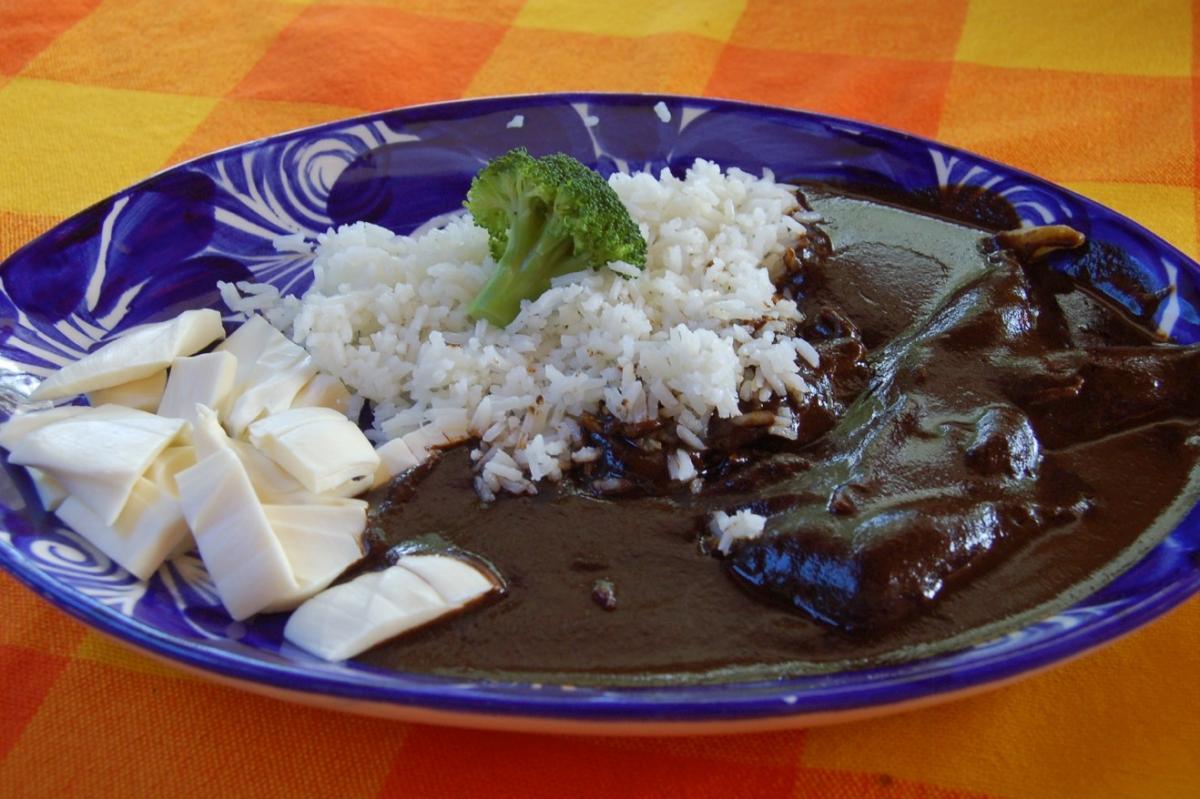
Mole is a rich, spicy sauce served over chicken or turkey. / W. Scott Koenig, www.AGringoInMexico.com
Oaxaca is known as the land of seven moles. Moles are a complex combination of ground nuts, seeds, spices, chiles, chocolate, herbs and other ingredients that ultimately combine with stock to create a creamy sauce commonly served over chicken or turkey. Mole types include Negro (shown), Rojo, Coloradito, Amarillo, Verde, Chichilo and Manchamantel (the “tablecloth stainer”). Rice is included to help sop up every delicious drop.
4. Tlayudas
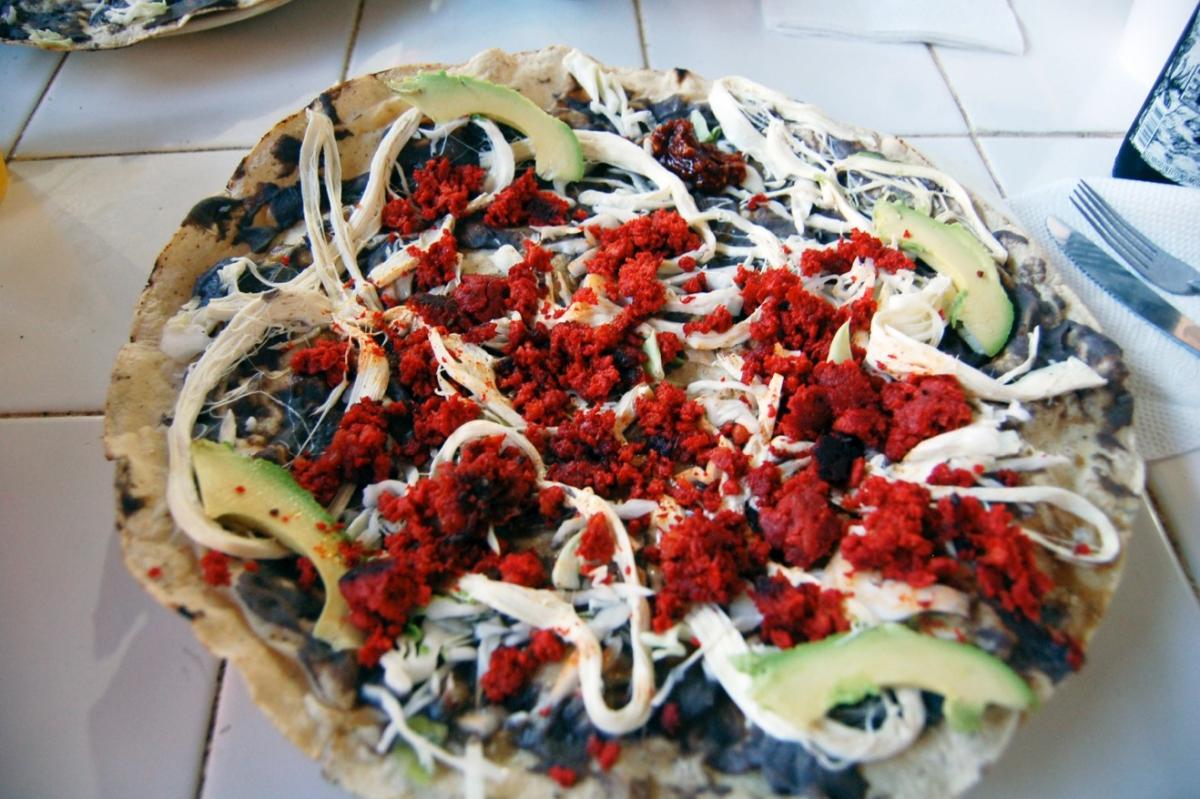
A tlayudas topped with Oaxacan chorizo at Fonda Maria Cristina at the Mercado 20 de Noviembre. / W. Scott Koenig, www.AGringoInMexico.com
I couldn’t wait to try my first tlayuda, hoping it would be as fun to eat as it is to say. A large tortilla is baked on a comal (heated plate), smeared with black bean paste and pork lard, and then topped with quesillo (Oaxacan string cheese), lettuce, avocados and carne (meat), if you’d like. My favorite, topped with spicy Oaxacan chorizo, was at Fonda Maria Cristina at the Mercado 20 de Noviembre.
5. Tamales Oaxaqueña
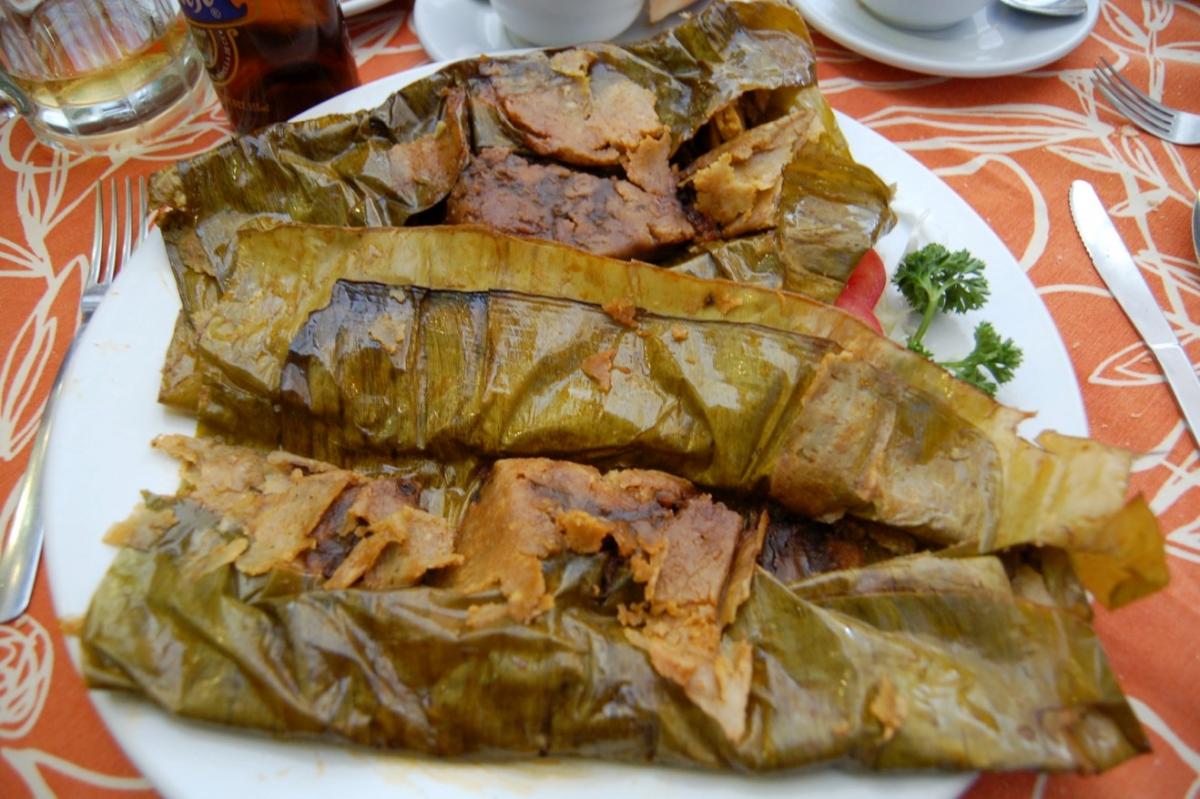
Traditional Tamales Oaxaqueña are served wrapped in banana leaves. / W. Scott Koenig, www.AGringoInMexico.com
Traditional Tamales Oaxaqueña are served wrapped in banana leaves, such as those served at Le Catrina de Alcala in Oaxaca de Juarez (shown). The waiter opens them tableside to reveal a deep, rich, hearty, flavorful masa containing pork, chicken or other carne marinated in mole inside. Designed to create a portable meal for Zapotecs on the go, tamales are an original pre-Hispanic “fast feast.”
6. Mezcal
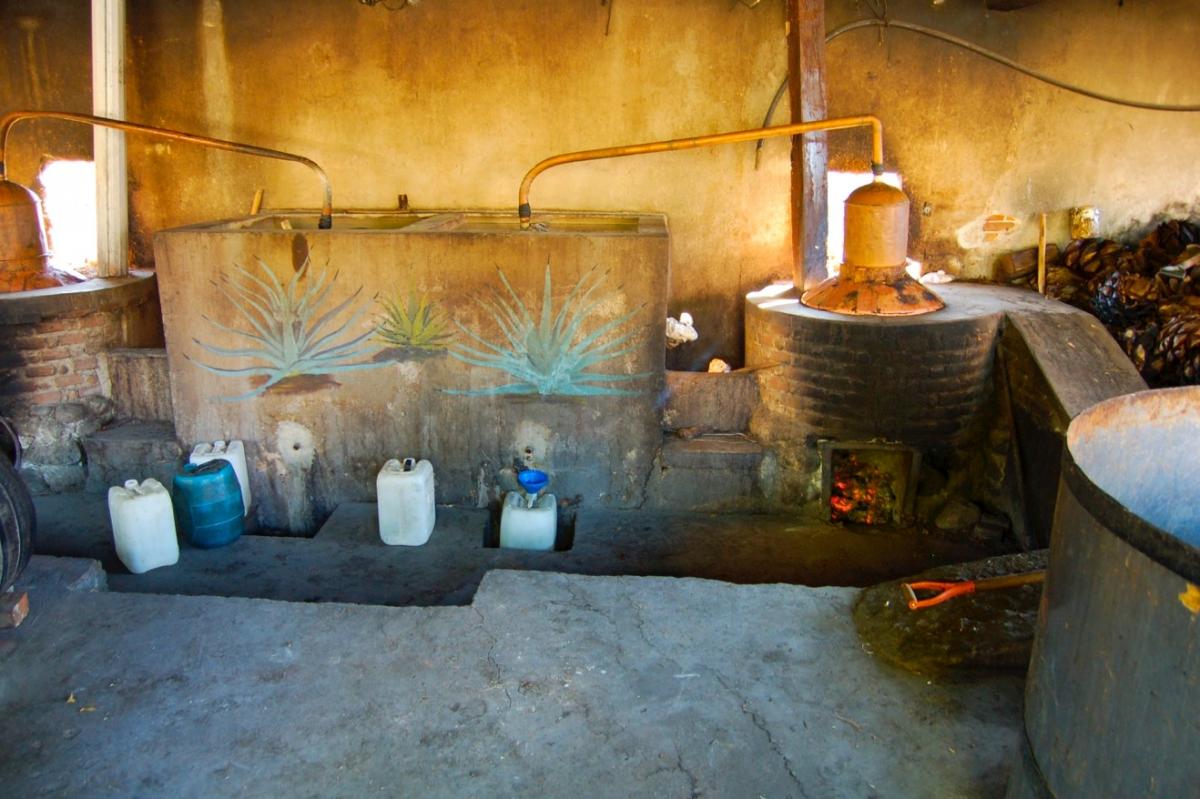
Artisanal palenques produce Mezcal just outside Oaxaca. / W. Scott Koenig, www.AGringoInMexico.com
In addition to great food, Oaxaca is the home of Mezcal, made from burned piña of the Maguey cactus and typically served with “sal con gusano,” salt with dried extract of the Maguey worm. Mezcal is produced by small artisanal (shown) and large corporate palenques just outside Oaxaca. They produce distilled spirits for men and Mezcals with creams and fruit added for the ladies. I liked the Pechuga, a limited-run Mezcal in which fruits are added and vapors passed through a chicken breast (pechuga) during the last of three distillations to mellow the smoky taste.
Category:
Recommended features by ExtremeFoodies



